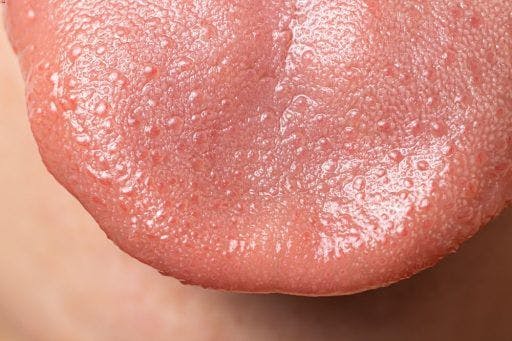Your taste buds enable you to detect the five basic tastes: sweet, salty, bitter, sour, and umami. Whether you realise it or not, they’ve saved you countless times – from chugging expired milk, ingesting contaminants, and so many stomach aches. They also make eating and drinking more enjoyable, so you’re less likely to skip a meal and miss out on vital nutrition.
But how well do you really know these tiny taste sensors? Here are a few fun facts about taste buds to spice up your life.
Fact #1: The Average Person Has About 10,000 Taste Buds

The number varies depending on genetics, ageing, and lifestyle changes, among other factors. Some experts estimate that babies are born with roughly 10,000, while the average adult only has between 2,000 to 4,000. This may be why infants have heightened taste sensitivity.
Meanwhile, the older you get, the duller your sense of taste becomes. Your salivary glands produce less saliva as you age, which can impact taste. Certain medications, health conditions, and long-term habits, like drinking or smoking, can also dull your senses.
Fact #2: They Self-Repair Every 10 Days
Have you ever taken a sip of a scorching hot drink and felt your tongue burn? For a while, you might experience swelling and an inability to taste foods. Thankfully, most injuries to your palate are temporary. Under normal conditions, taste buds regenerate by themselves every two weeks.
Fact #3: They’re Not Just on Your Tongue
Yes, most of them are on your tongue. However, you’ll also find them in other areas of the body, as one article published in Current Research in Food Science points out. “Cells with taste receptors are actually expressed throughout the gastrointestinal tract,” which includes the throat and oesophagus. If you’ve ever experienced acid reflux, you can vouch – there’s no denying that awful bitterness that coats the throat during gastroesophageal reflux disease (GERD) episodes.
Fact #4: There are No “Taste Zones”
Most people are familiar with the so-called “taste map,” a diagram that assigns tastes to different areas of the tongue. As it turns out, many chemosensory scientists and researchers have already debunked the idea. In an article for The Conversation, Steven D. Munger, director at the Center for Smell and Taste, explains, “Experiments indicate that all areas of the mouth containing taste buds […] are sensitive to all taste qualities.”
Fact #5: Reacting to Bitterness is Survival Instinct

Disliking bitter foods isn’t simply a matter of preference – there might be an evolutionary reason, too. Bitter taste receptors allowed some early humans and other animals to detect toxins in inedible plants, saving them from illness and death. So, if your initial reaction to tasting something bitter is outright disgust, it could be your genes talking. You might even be what many scientists call a supertaster: someone with a heightened sense of taste and sensitivity to bitterness.
Fact #6: Their Cells Communicate With the Brain
According to the Australian Academy of Science, “Taste buds are a combination of cells – basal cells, columnar (structural) cells, and between 10 and 50 taste receptor cells […].” These receptors need to detect the chemicals in whatever you consume to communicate with your brain’s primary gustatory (taste) complex. It’s only when your brain receives this information that you’re finally able to taste. That’s also why taste disorders are a symptom or side effect of certain neurological conditions.
Fact #7: You Also Need Your Nose and Saliva to Experience Flavour
Tasting is a group effort involving your mouth, nose, and brain. Now that you know taste receptors are responsible for communicating with the brain, you might wonder: how are they activated?
Chewing breaks down and wets your food with saliva to release the chemical components of taste (tastants). Then, your nose picks up on these signals. Your brain joins the party once your taste buds and olfactory (smell) receptors sync up, allowing you to register flavour. These critical connections explain why plugging your nostrils is effective when you don’t want to taste something unsavoury!
Fact #8: Good Oral Hygiene Keeps Them Healthy

Your taste buds may be resilient and self-repairing, but practising proper oral hygiene can still do wonders for them. They’re part of your tongue, which can become more vulnerable to oral health issues when neglected. So, remember to clean this muscular organ as frequently as you brush and floss your teeth.
You might even consider investing in a dedicated tongue scraper for a more thorough clean. And if you wear removable orthodontic appliances, like ClearCorrect aligners, rinse them with lukewarm water before popping them back into your mouth. These simple acts can reduce the harmful bacteria that lead to bad breath and plaque buildup – not just on your teeth but on your tongue, too.
Your taste buds are tiny but mighty, allowing you to experience simple human joys – like eating and drinking – in all their glory. If you ever notice them acting up, don’t brush it off. Talk to your healthcare provider about your symptoms. Your taste buds could be trying to tell you something about your health!
References:
Berthold, E. (2019, September 19). How do our tastebuds work? Curious.
How smell and taste change as you age. (n.d.). National Institute on Aging.
Institute for Quality and Efficiency in Health Care (IQWiG). (2016, August 17). How does our sense of taste work? InformedHealth.org – NCBI Bookshelf.
Martin, L. E., Gutierrez, V. A., & Torregrossa, A. (2023). The role of saliva in taste and food intake. Physiology & Behavior, 262, 114109.
Munger, S. D. (n.d.). That neat and tidy map of tastes on the tongue you learned in school is all wrong. The Conversation.
Professional, C. C. M. (n.d.-c). Taste buds. Cleveland Clinic.
Sergi, G., Bano, G., Pizzato, S., Veronese, N., & Manzato, E. (2017). Taste loss in the elderly: Possible implications for dietary habits. Critical Reviews in Food Science and Nutrition, 57(17), 3684–3689.
Spence, C. (2022). The tongue map and the spatial modulation of taste perception. Current Research in Food Science, 5, 598–610.
Wooding, S. P. W., Ramirez, V. A. R., & Behrens, M. B. (2021). Bitter taste receptors: Genes, evolution and health. Evolution, Medicine, & Public Health, 9(1).



